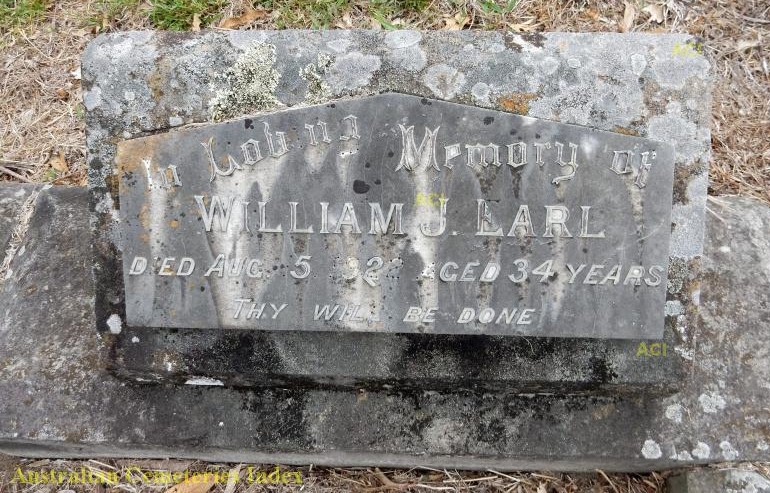35th BATTALION AIF
Private: 420 William Joseph EARL
Born: 17th September 1887. Jillaby near Wyong, New South Wales, Australia. Birth Cert:37819/1888.
Married: 7th June 1919. Tanfield County of Durham, England. Marriage Cert: ME2847.
Wife: Harriet Douglas Earl. nee: Cain. (1899-19..)
Died: 5th August 1922. Cottage Hospital. Dungog, New South Wales, Australia. Death Cert:13917/1922.
Father: William Earl. (1857-21/06/1937) Died at Cessnock, New South Wales, Australia.
Mother: Eliza Earl. nee: Morris. (1862-1918) Died at Dungog, New South Wales, Australia.
INFORMATION
William enlisted with the AIF on the 30th November 1915 at Newcastle, New South Wales and was allocated to the Newcastle Depot Battalion before he was allocated to B Company 35th Battalion on the 18th February 1916.
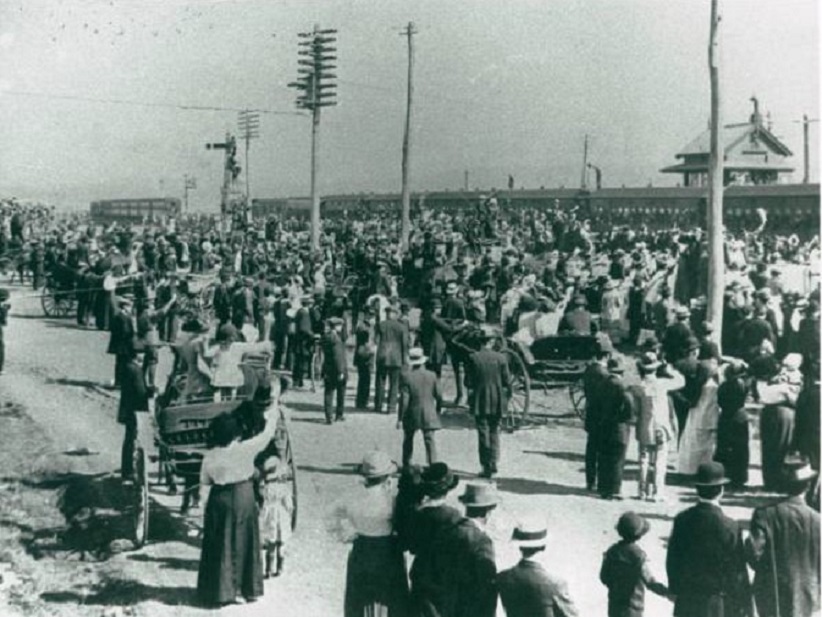
35th Battalion leaving Broadmeadow Station, Newcastle for Sydney.
William embarked from Sydney with the 35th Battalion on the 1st May 1916 on board HMAT A24 "BENALLA" with 28 Officers and 991 other ranks. The original 35th Battalion had regimental numbers between 1-1513. Compiling of Headquarters, Machine Gun Section, A Company, B Company, C Company and D Company. Arriving in England on the 9th early July, the Battalion spent the next four months in training. It crossed into France in late November, and moved into the trenches of the Western Front for the first time on the 26th of November, just in time for the onset of the terrible winter of 1916-17.
The 35th Battalion proceeded overseas for France on the 21st November 1916
7th June 1917.
THE BATTLE OF MESSINES
The 3rd Australian Divisions first major offensive was at Messines Ridge on the 7th June 1917. The Australian 3rd Division was a part of the II Anzac Corps which was allotted to the first assault. The 25th New Zealand, 3rd Australian Division with the 4th Australian Division in reserve. The 4th Division were battle hardened troops who had fought many major battles. The 3rd Australian Division were having problems getting to the "jump off" point. The day before the 9th and 10th Infantry Brigades were bombarded by German Gas-Shells around Hill 63 and Ploegsteert Wood. Many of the Aussies were not wearing gas masks, but despite this they pressed on even though they received 500 casualties.
They made it to the "jump off" point but only just with some of the men from the 9th and 10th going straight over the top without stopping. The mines went up and the attack commenced behind a protective barrage. The II Anzac Corps were attacking on the right with their objective being the southern shoulder of the ridge which included Messines, the Dover and St Yves areas as far south to the east of Ploegsteert Wood.
Major General Sir John MONASH's 3rd Division had to contend with a tricky 3 mile approach out of Ploegsteert Wood and after the German gas attack, but they were not deterred. The 9th Infantry Brigade under Brigadier General: Alexander JOBSON and the 10th Infantry Brigade under Brigadier General W R NICHOLL had just made the jumping off point but some of the men did not stop, going straight into the assault from the approach march.
Their objective lay between St Yves and the Douve. The mines at Trench 127 and Trench 12 at Factory Farm were laid to aid this task. The explosions erupted a few seconds before zero hour and created craters of 200 feet in diameter, completely obliterating the German defence line as the 9th and 10th Infantry Brigades went over the top. The mine crates forced the 9th and 10th Brigades to veer to the left and right which caused some confusion with the main assault. It is testimony to the quality of training that every man knew the ground, tasks and objectives so well.
Private: 1804 John CARROLL 33rd Battalion, rushed the enemy's trench and bayoneted four of the German occupants. He then noticed a comrade in difficulties and went to his assistance, killing another German. He then attacked single handed a German Machine Gun Team, killing all three of them and capturing the gun. He later rescued two of his comrades who had been buried alive by German Shell Fire, and in spite of heavy shelling and machine gun fire he dug them out alive and saved them from certain death. John was awarded the Victoria Cross.
The German forward zone was completely engulfed and taken by the main assault. The two supporting battalions of each brigade then passed the leading battalion to continue the advance. The men were constantly re-supplied and the ridge was taken. There were many German prisoners taken during the offensive. The 3rd Division was well ahead with the 9th Infantry Brigade pushing on beyond Grey Farm, and on the right the 10th Infantry Brigade were veering left towards Septieme Barn north of Douve.
The German resistance was heavy but was generally brushed aside by tanks and artillery before the infantry had to become too involved. The 4th Bavarian Divisions Artillery had made little impact, but as the day wore on the 3rd Division and later the 4th Australian Division received many casualties from German artillery. (70% of all casualties during WW1 were from artillery).
By 9:00am nearly 6 hours after the assault began the Germans were in disarray, but there was a major problem as the Australians received less casualties as anticipated and when ordered to dig into the ridge they had so many men, that some could not find shelter. the 35th battalion were dug in around Seaforth Farm.
The second phase of the operation was to take the Oosttaverne Line. The 3rd Australian Division would now be in reserve with the 4th Division attacking. The 9th Infantry Brigade (33-34-35-36Bn) were near Thatched Cottage facing Warneton. The river Lys was to their right and the Ploegsteert Wood was now behind them.
Once their objectives were taken the troops consolidated. A barrage to stop and counter attack was shortened and caught three battalions which had to retire. By 9:00 pm this part of the Oosttaverne Line was abandoned. At 10:45 pm General: Alexander John GODLEY ordered the 3rd and 4th Divisions to retake it. This they did by the early hours of the 8th of June.
The Battle for Messines Ridge during May-June 1917 saw 35 officers and 1,631 other ranks loose their lives.
9th Infantry Brigade Casualties.
| 33rd Battalion. AIF | 8 Officers | 382 Other ranks |
| 34th Battalion. AIF | 10 Officers | 378 Other ranks |
| 35th Battalion. AIF | 5 Officers | 431 Other ranks |
| 36th Battalion. AIF | 9 Officers | 421 Other ranks |
| 9th Machine Gun Company. AIF | 2 Officer | 17 Other ranks |
| 9th Light Trench Mortar Battery. | 1 Officer | 2 Other ranks |

FIELD DRESSING STATION, MESSINES 7th June 1917.
William was Wounded in Action on the 8th June 1917 when he received a Gun Shot Wound to his Back and Left Shoulder and was treated by the 9th Australian Field Ambulance before he was evacuated from the lines by stretcher bearers to the Field Dressing Station for further treatment before he was transferred to Rouen where he was invalided to England and admitted to the 5th Southern General Hospital.
After William was discharged from Hospital he was marched in the Command Depot for overseas deployment and proceeded overseas for France via Southampton on the 30th August 1917 and re joined his unit on the 13th September 1917.
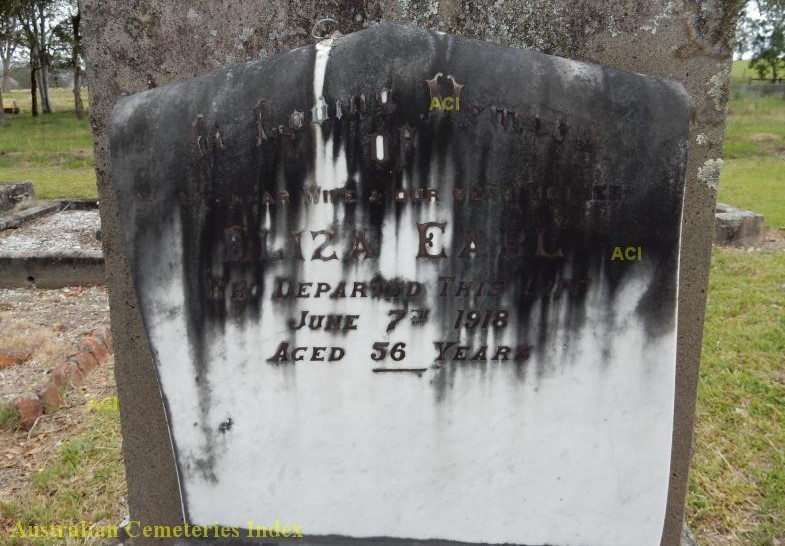
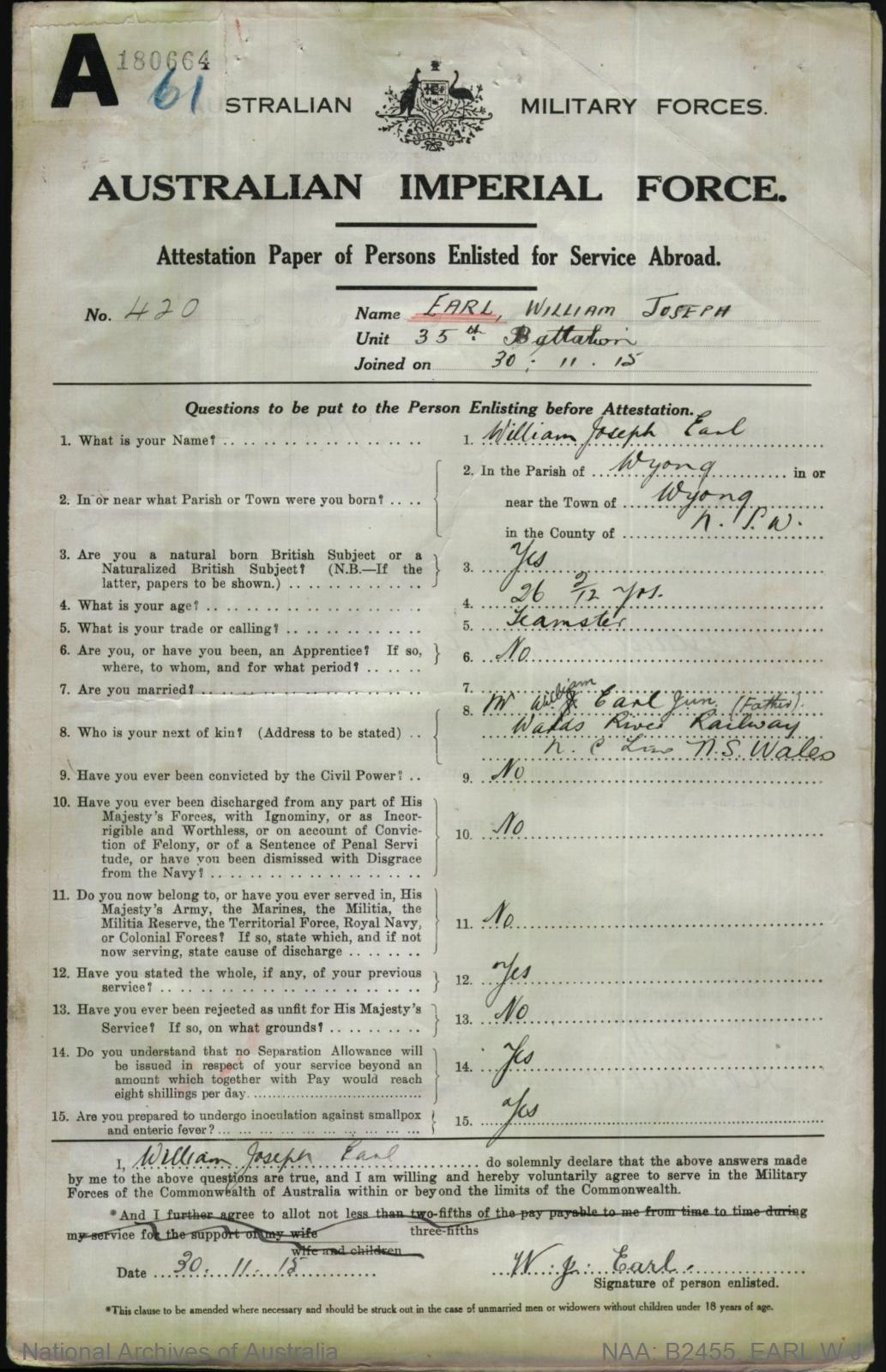
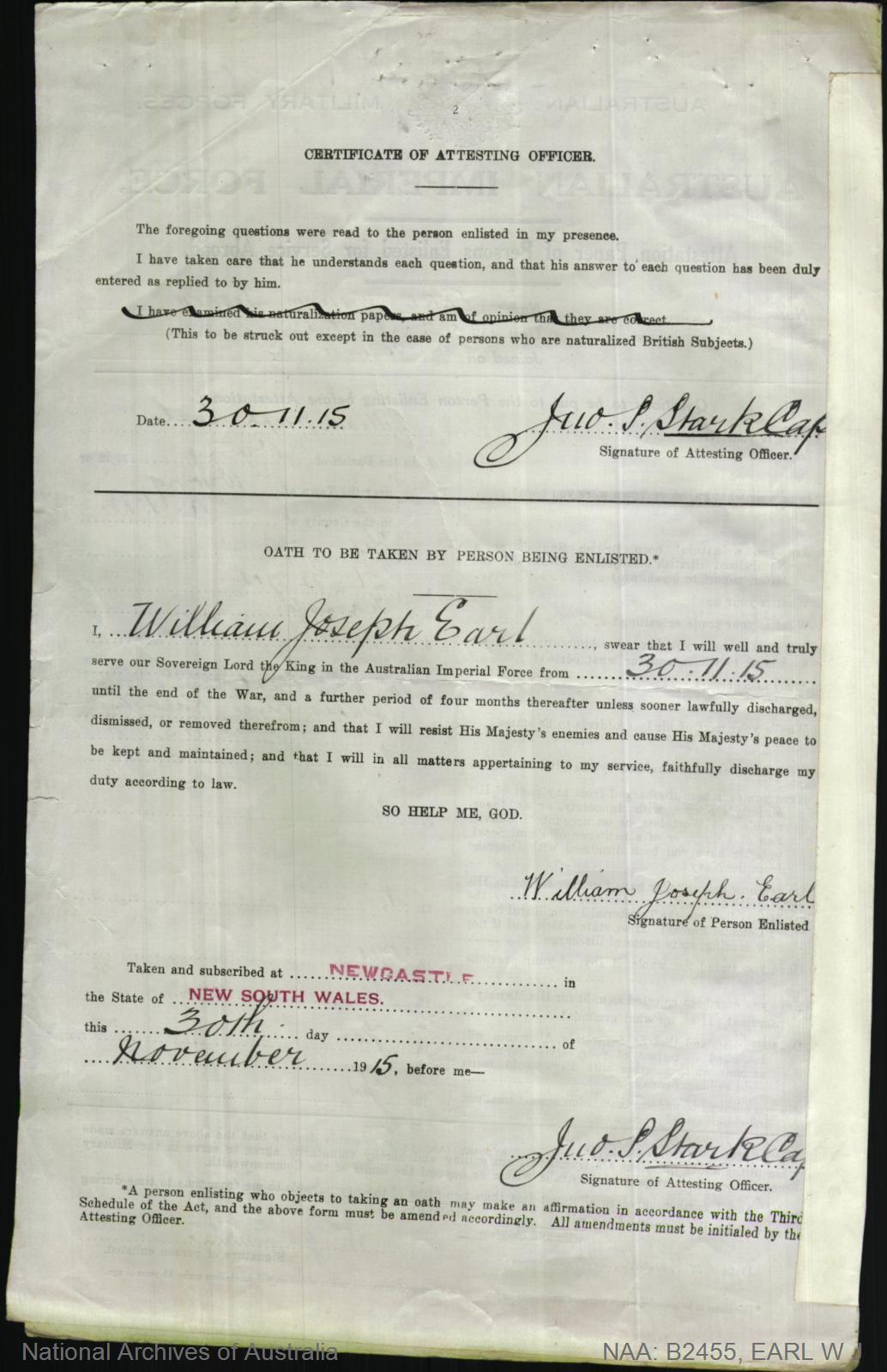
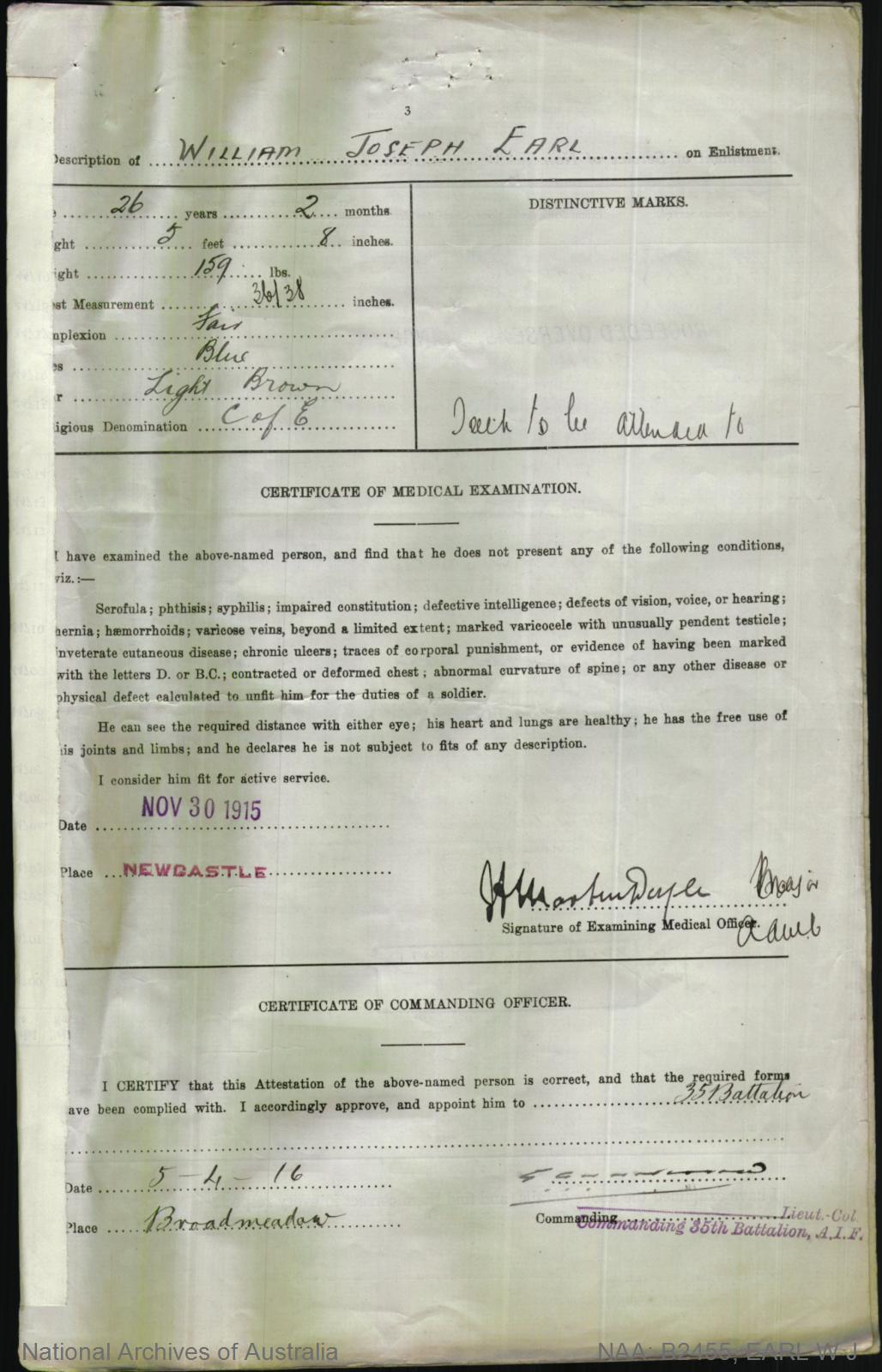
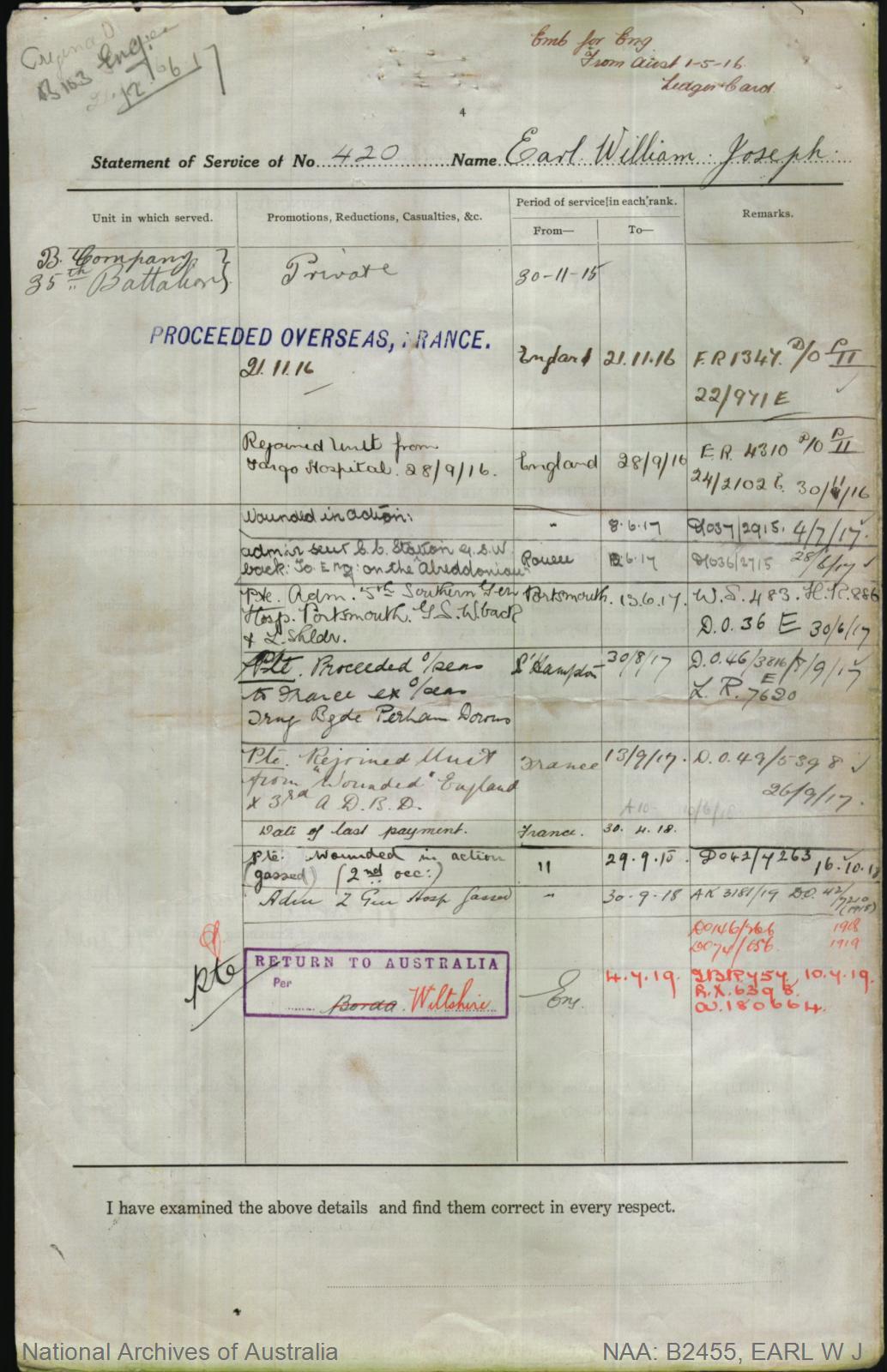
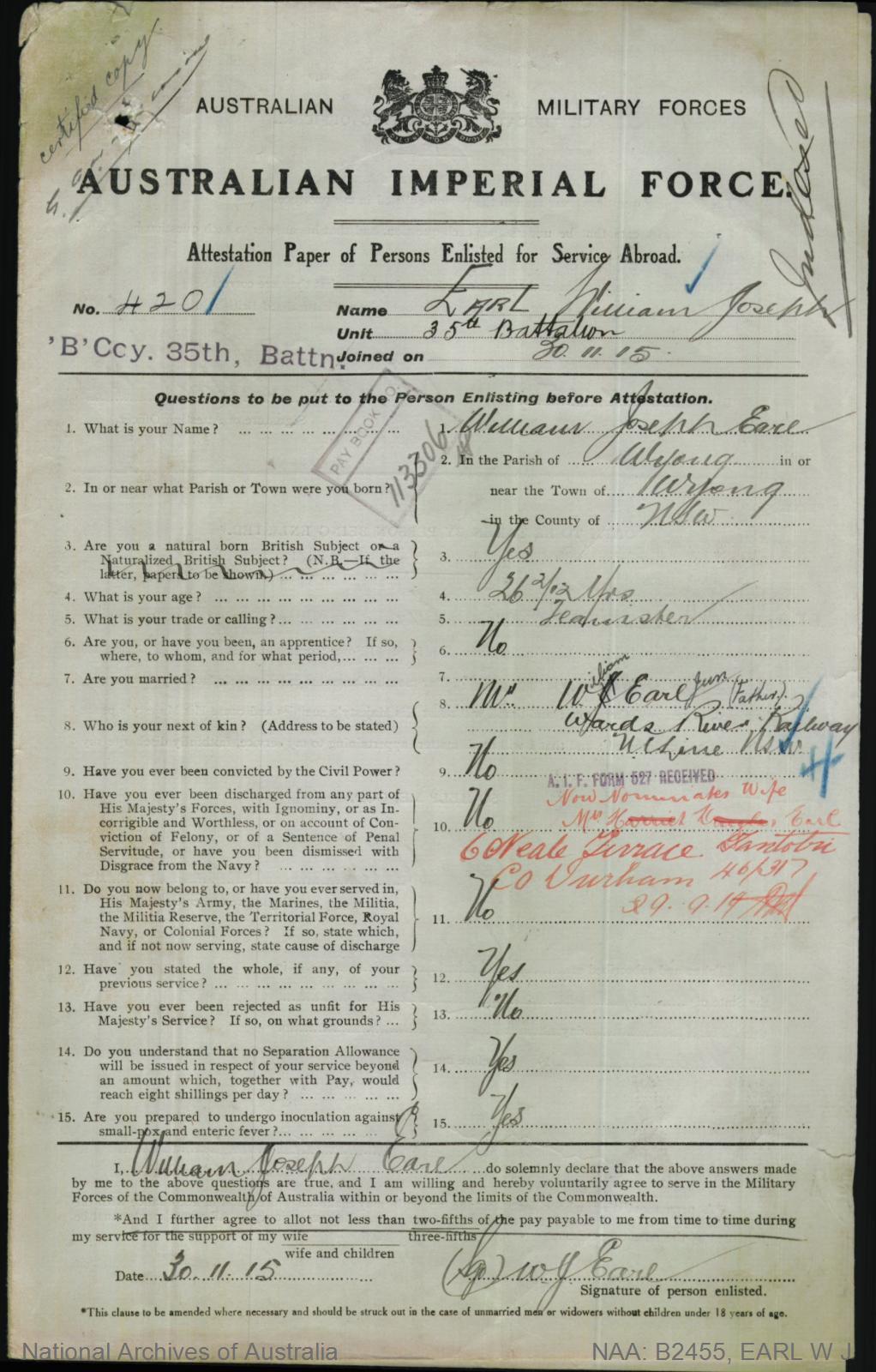

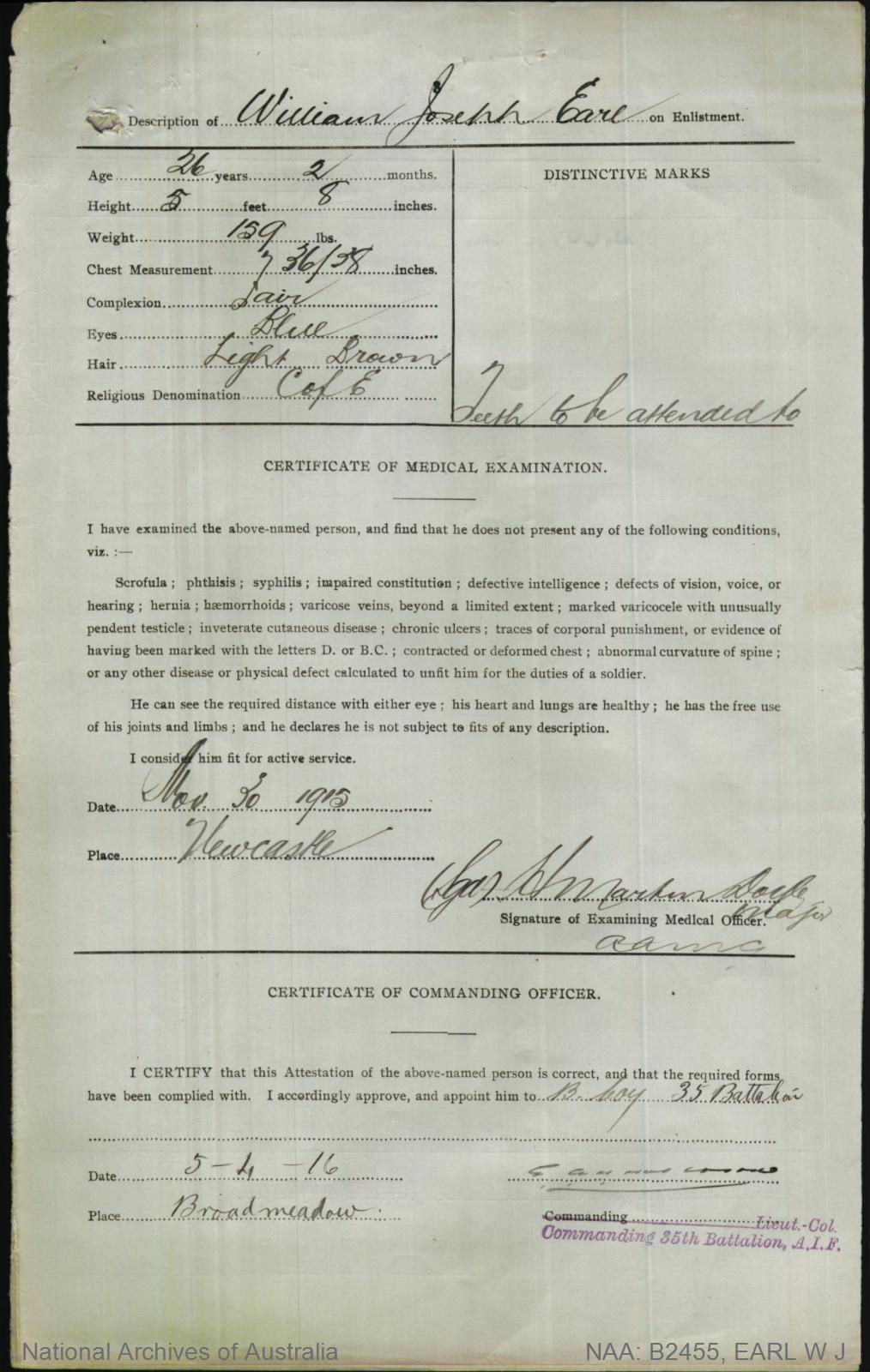
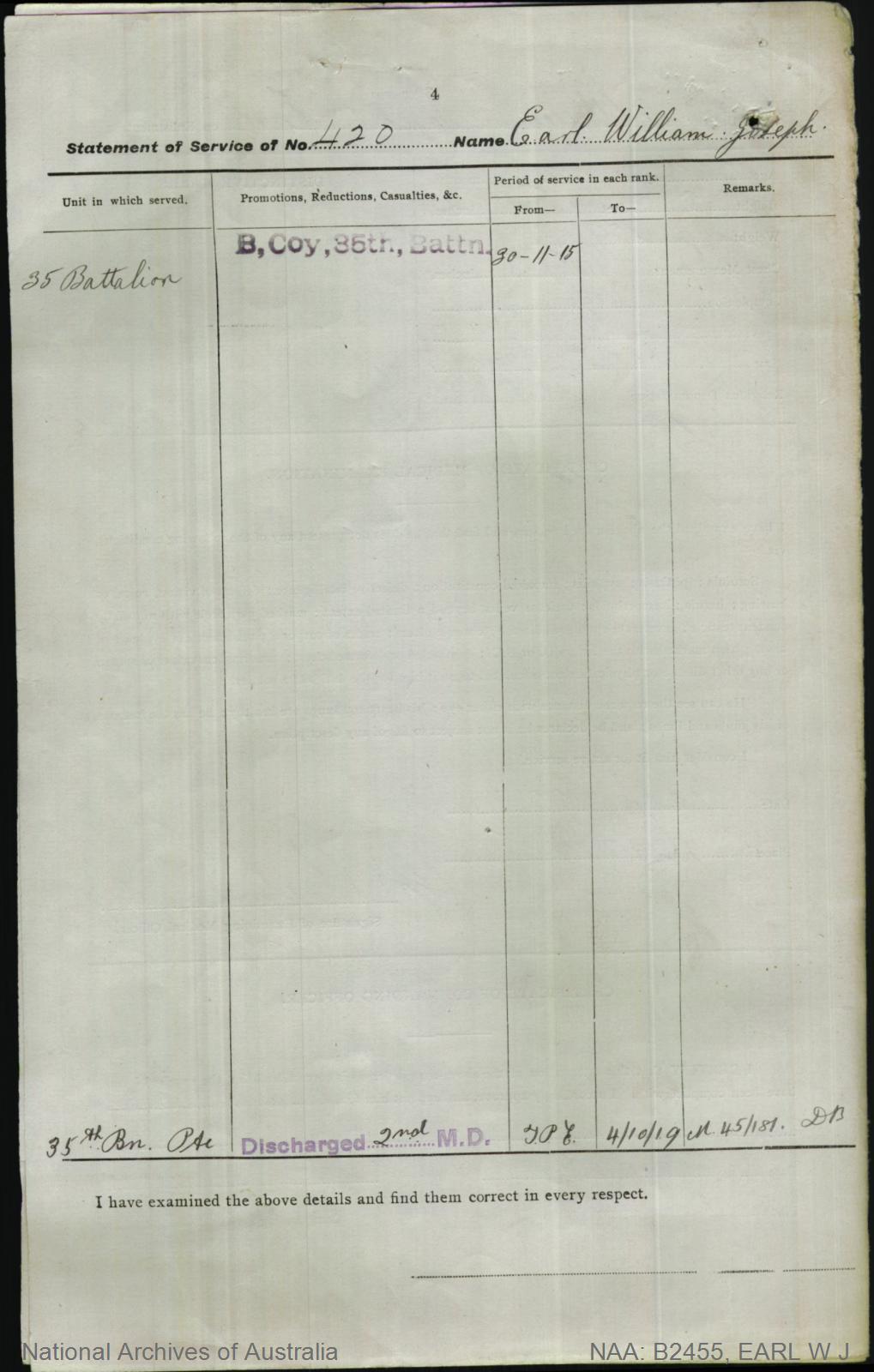
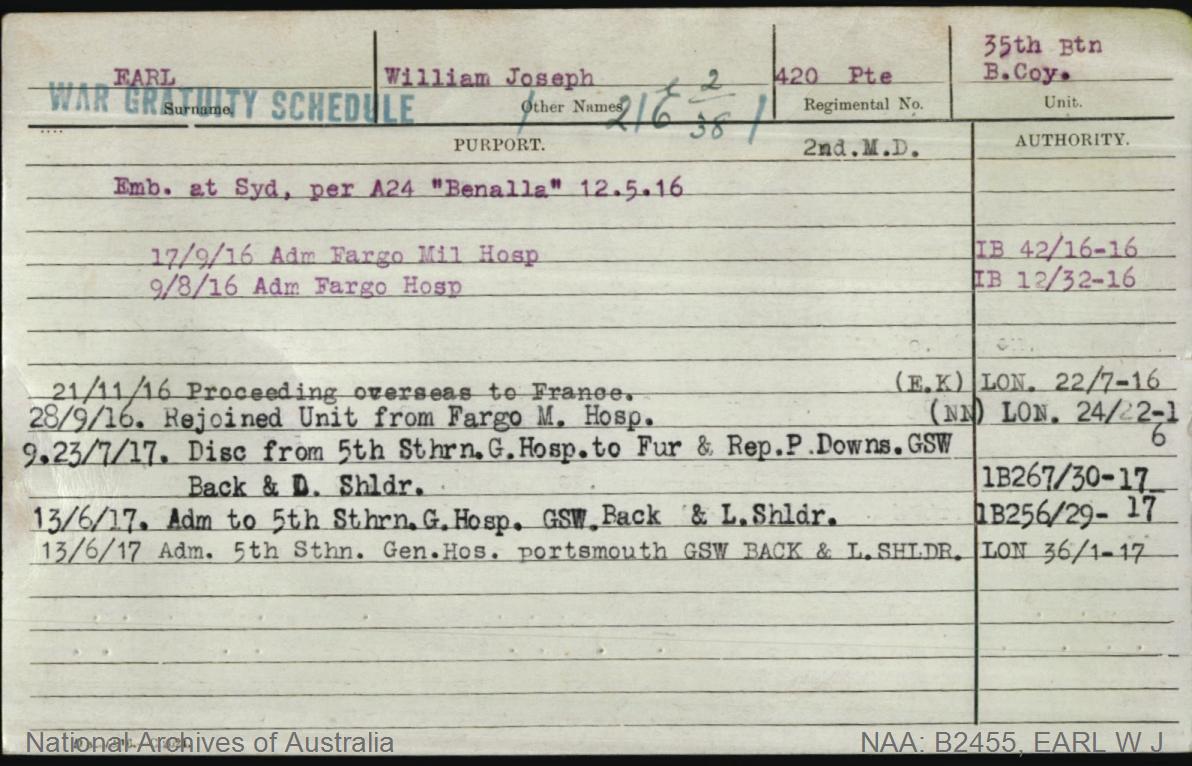
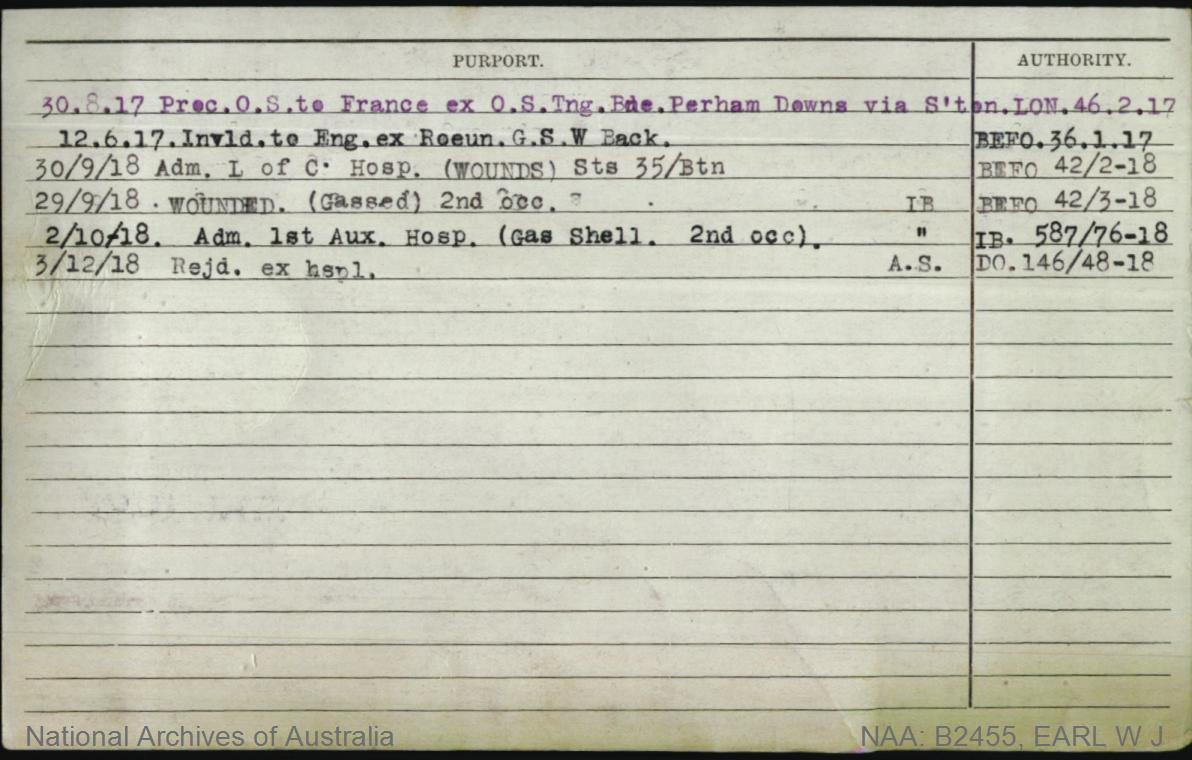



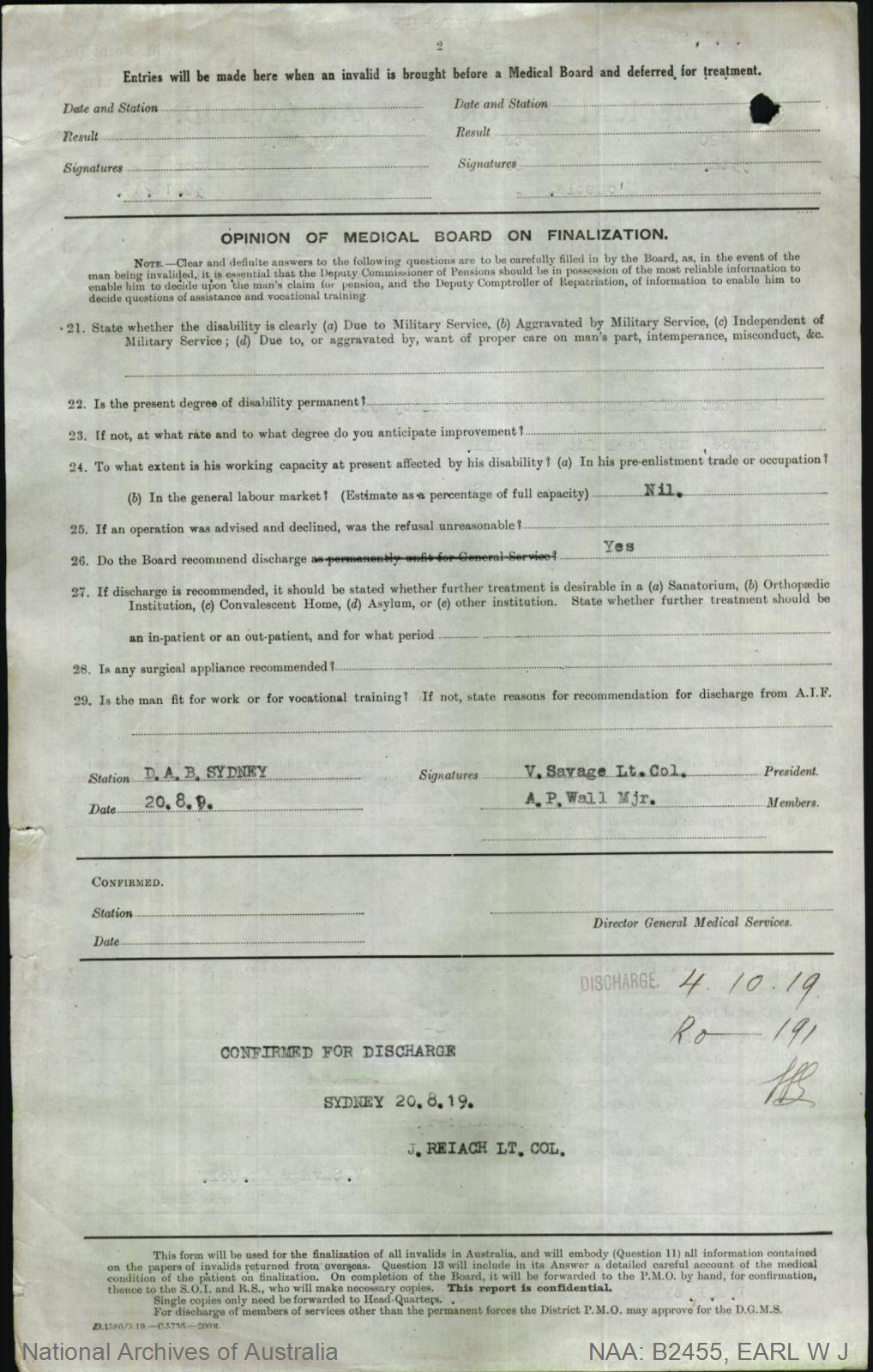
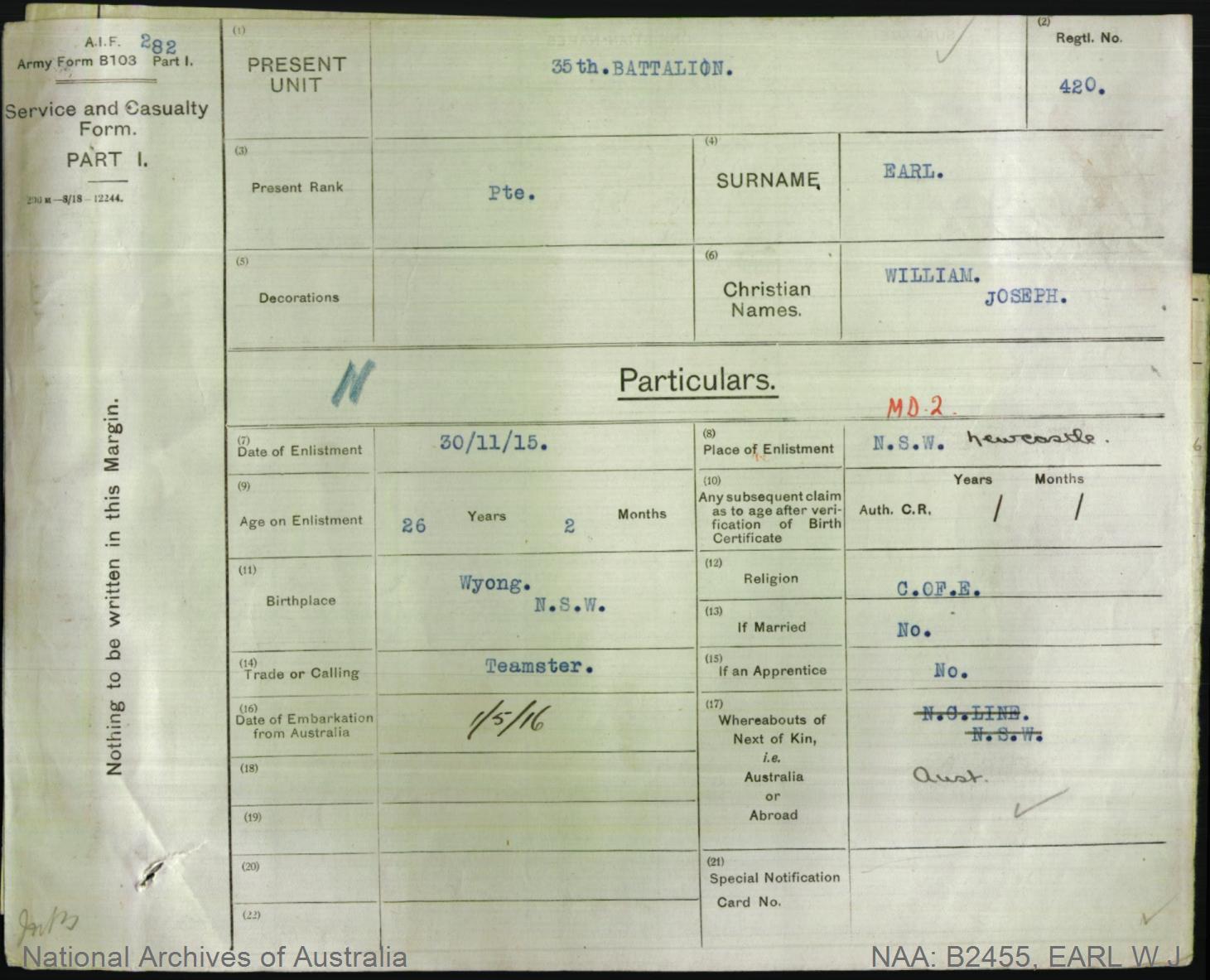
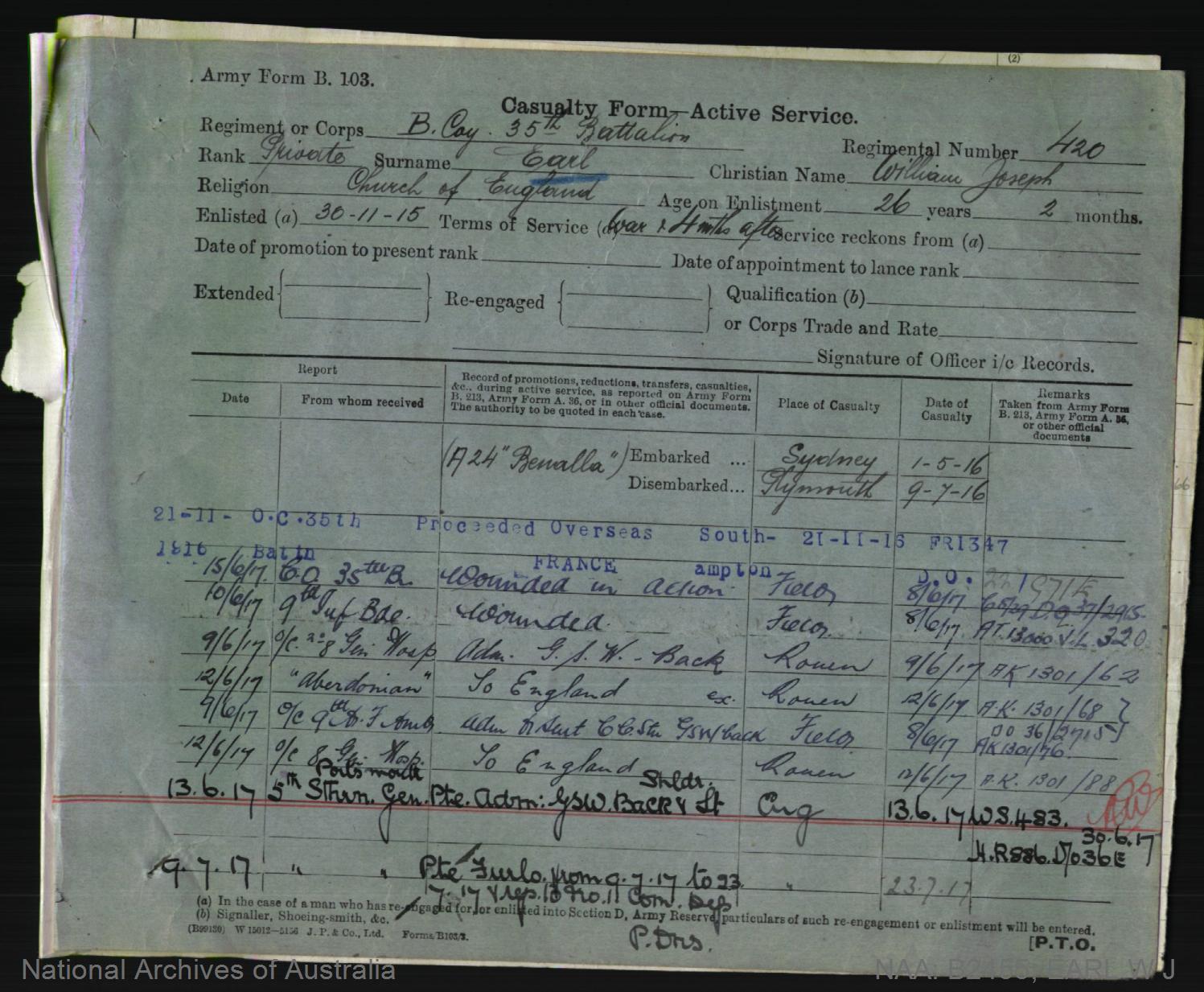
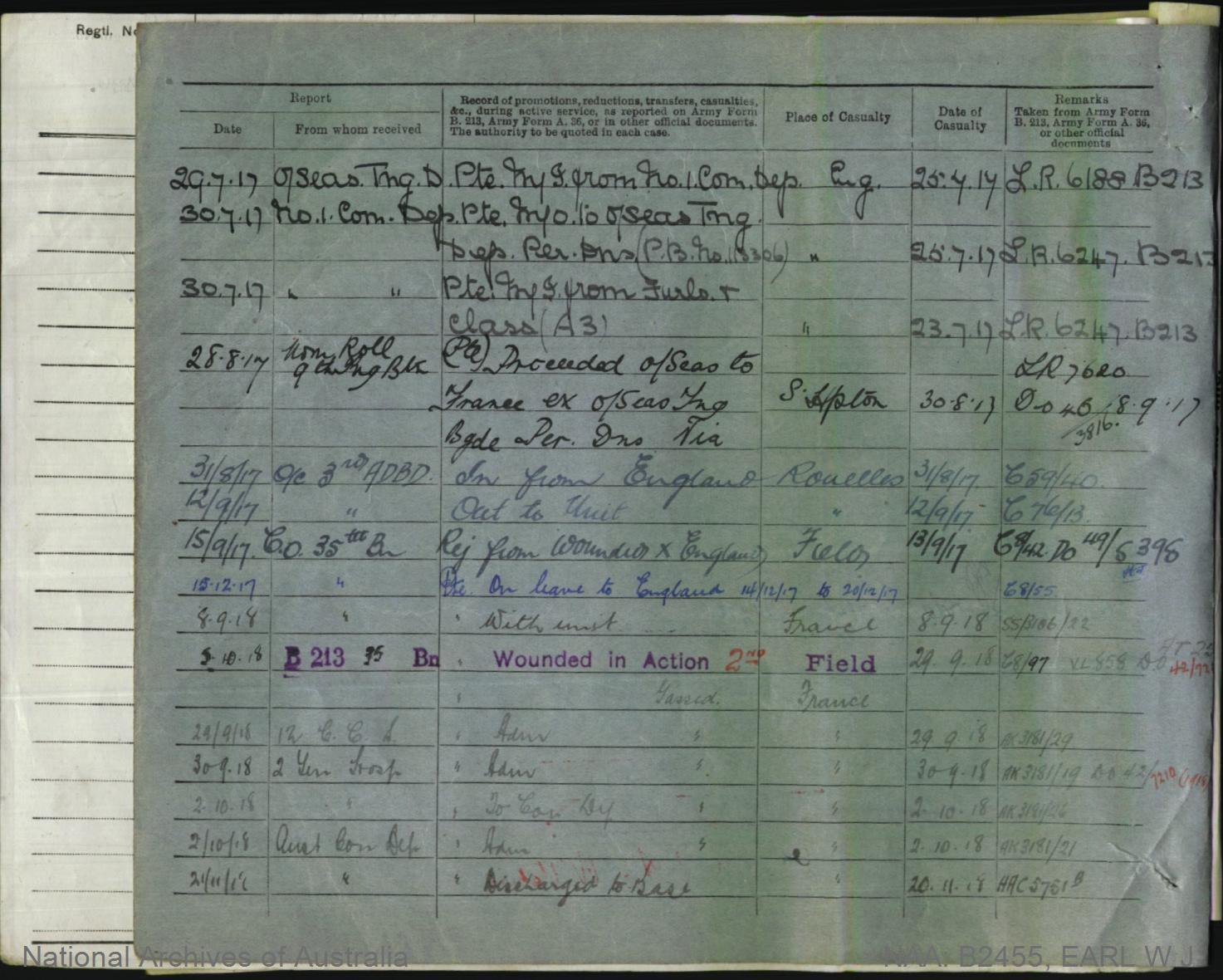
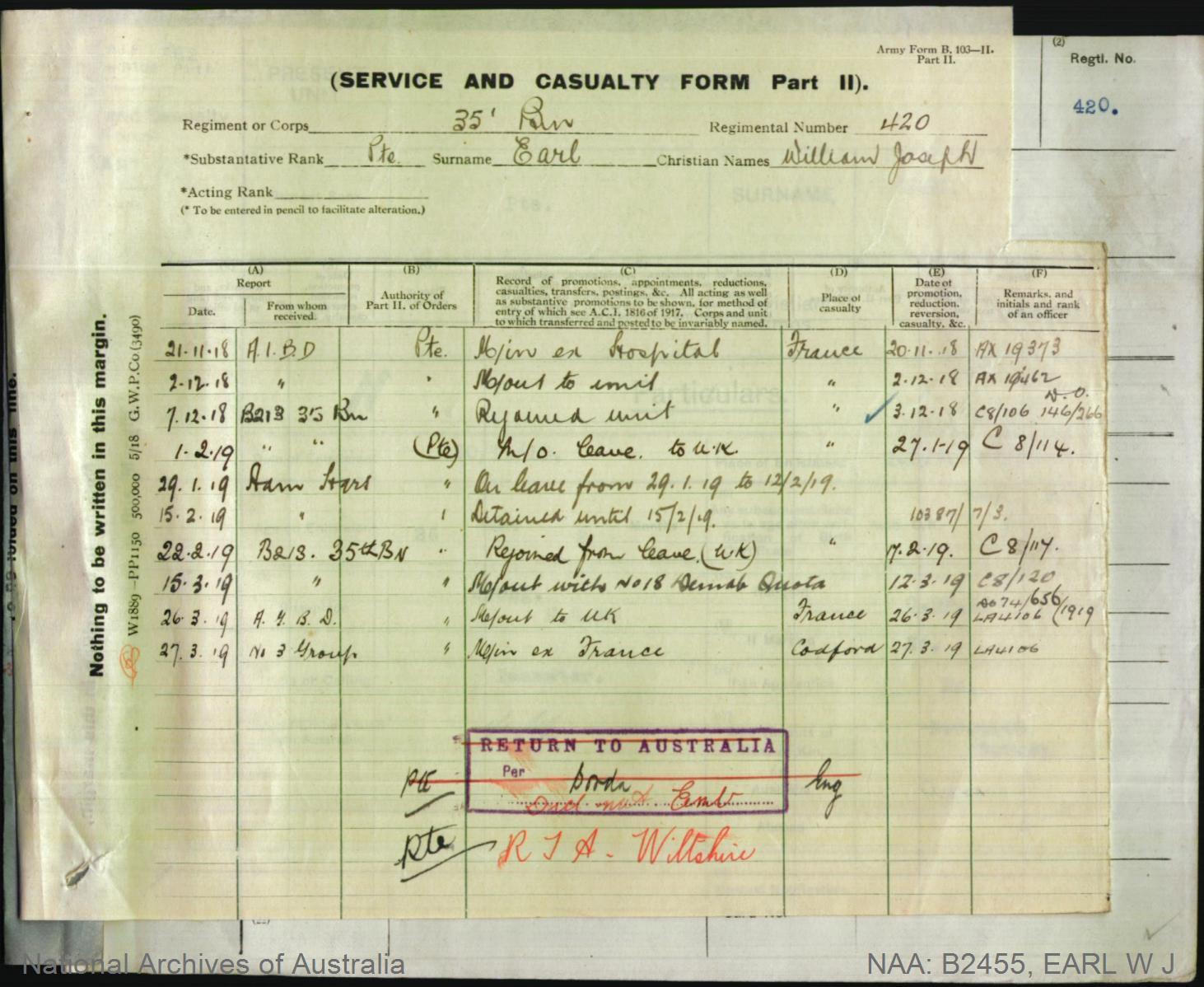

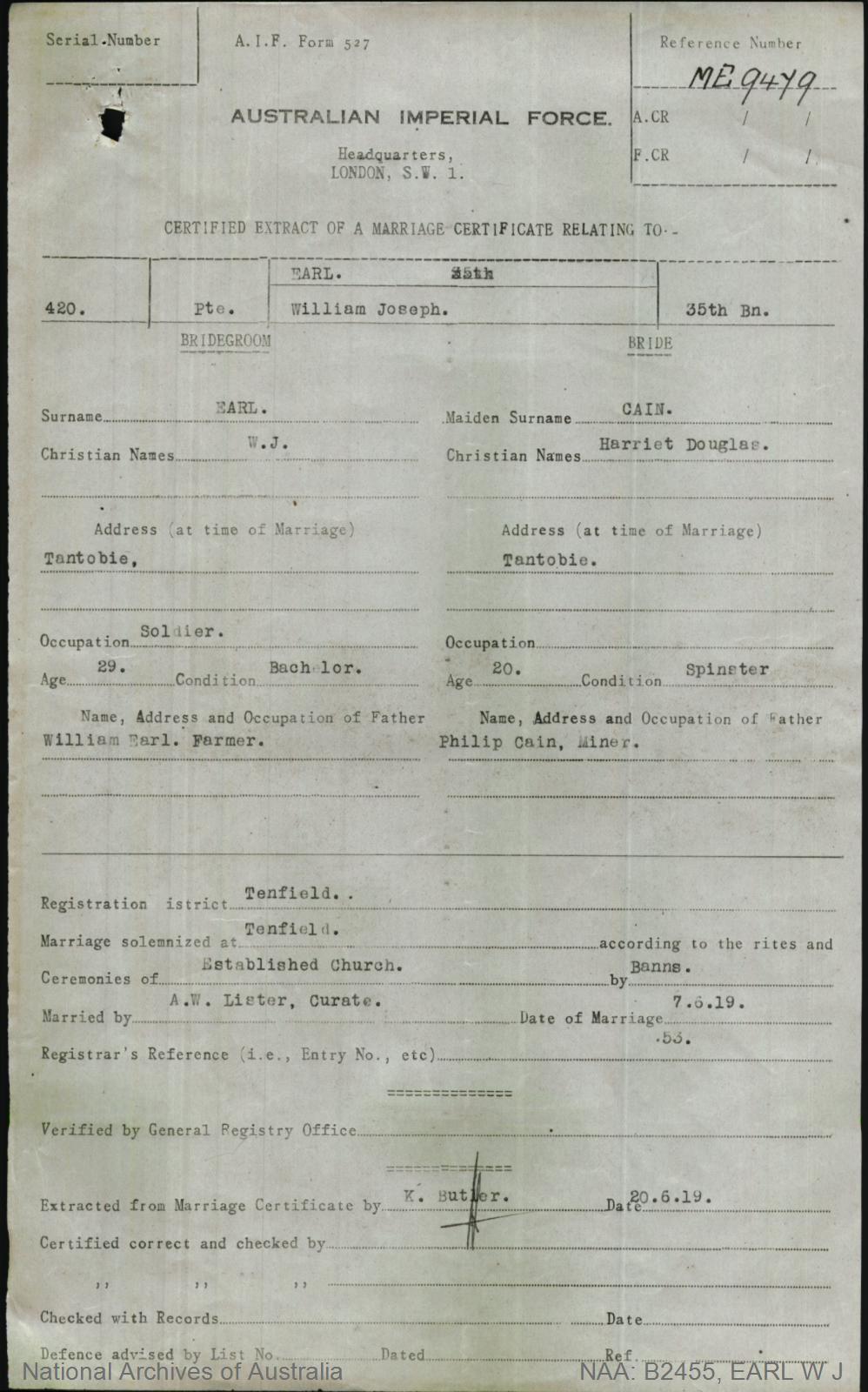
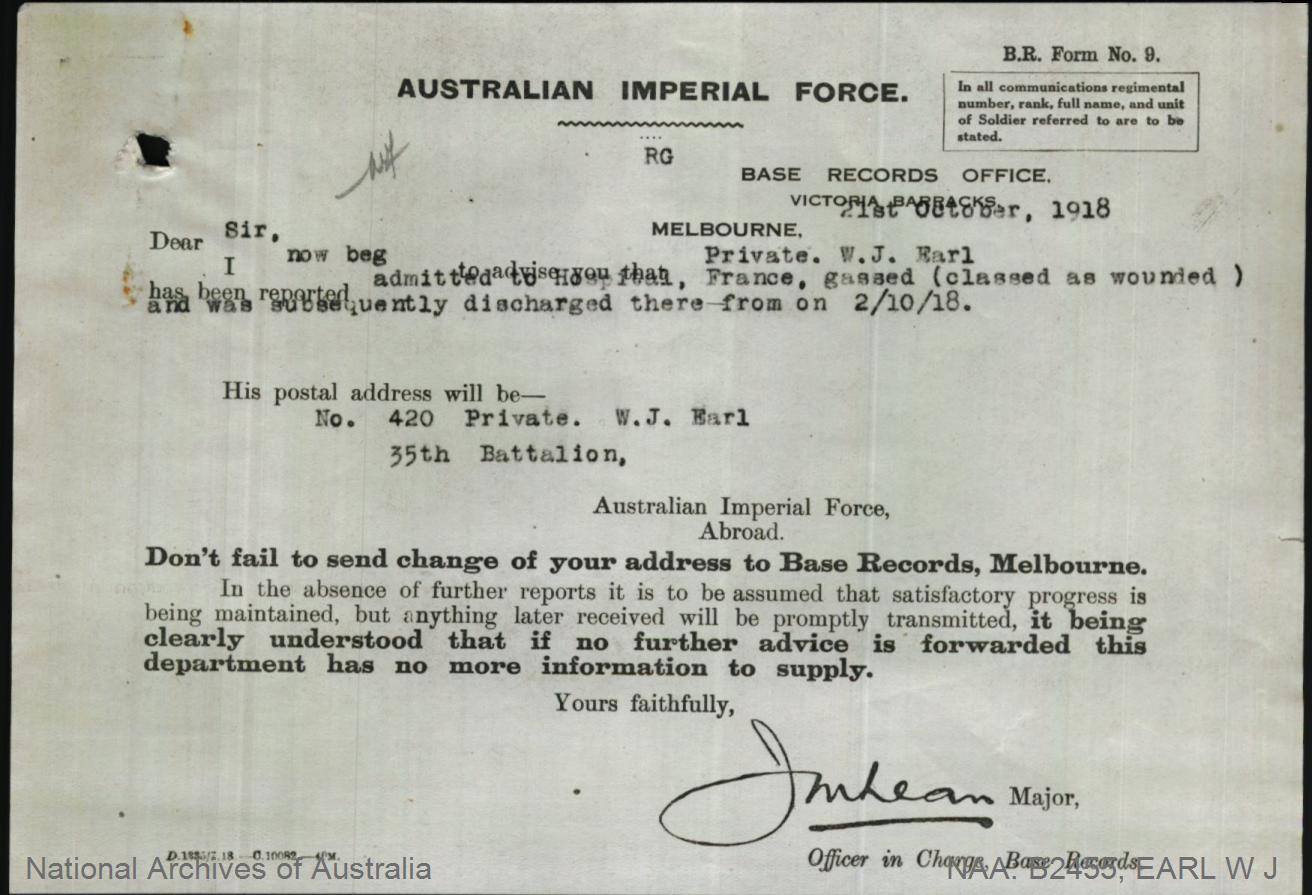
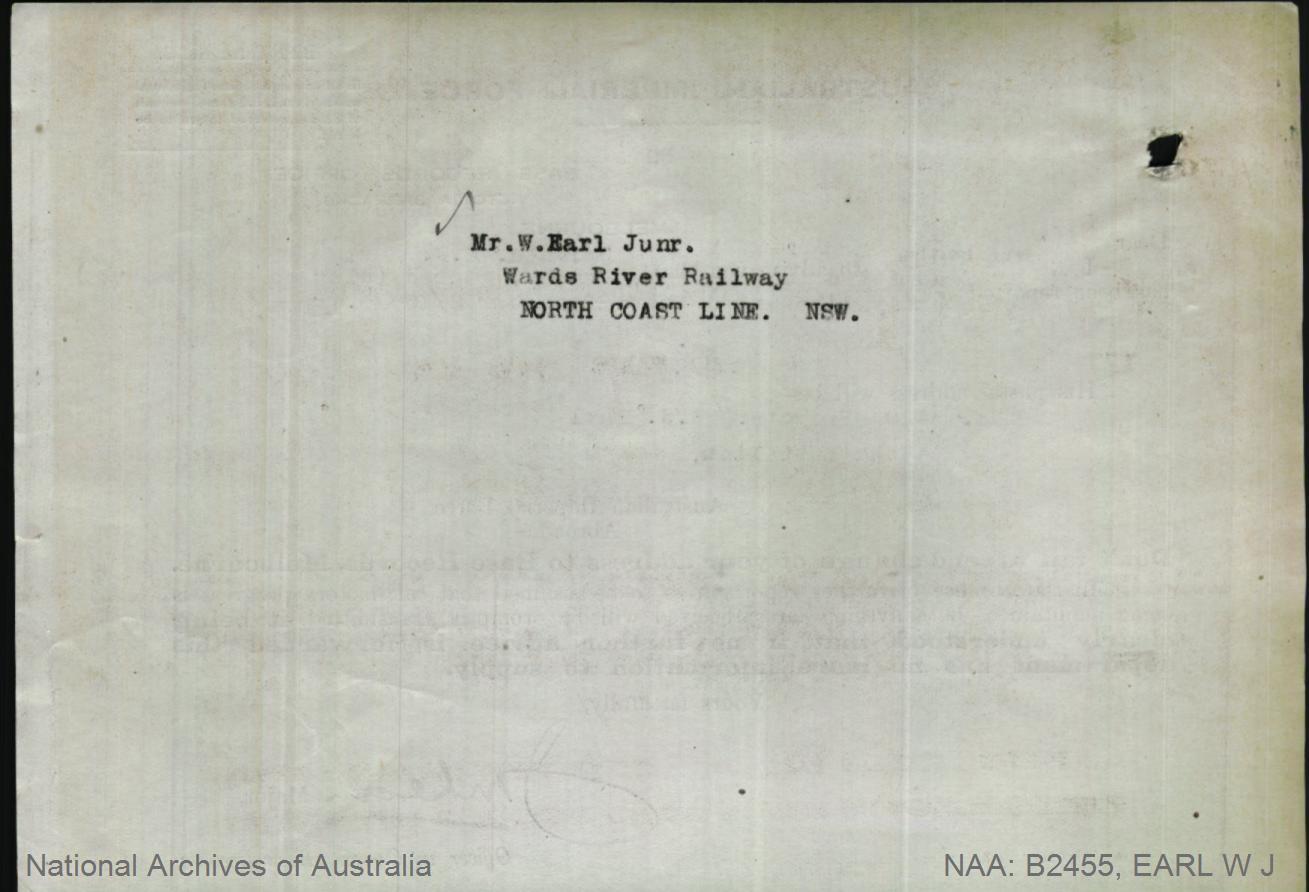
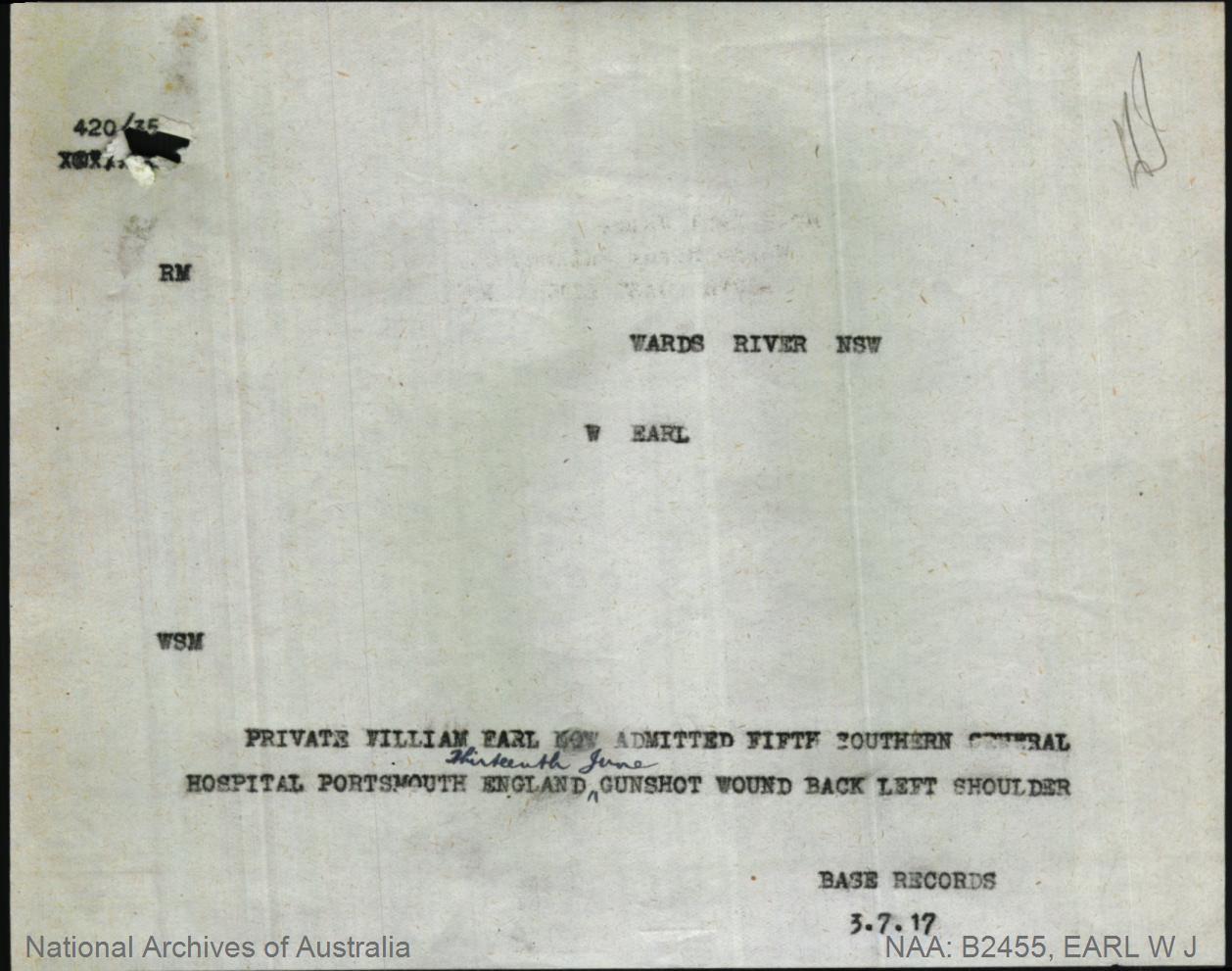
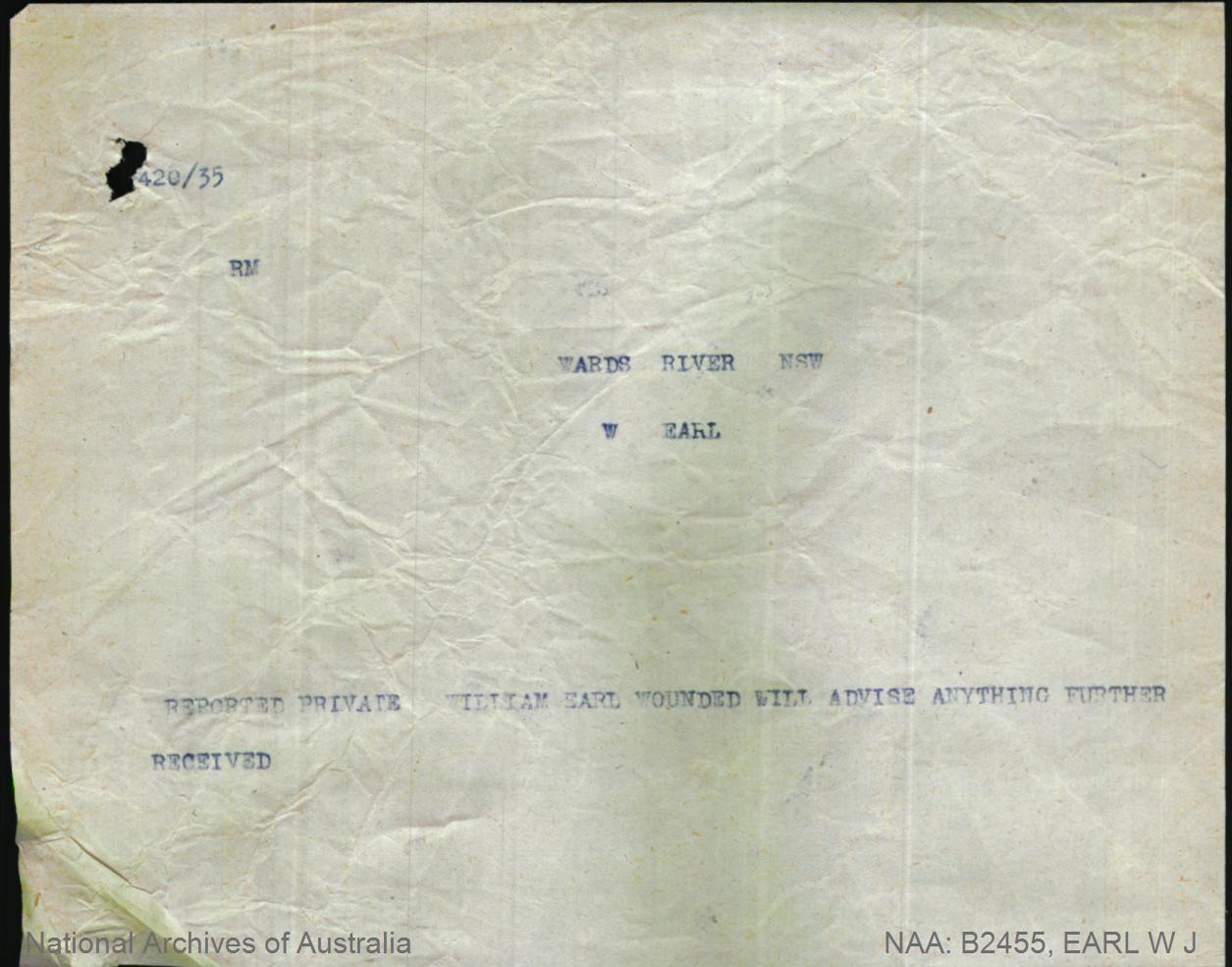
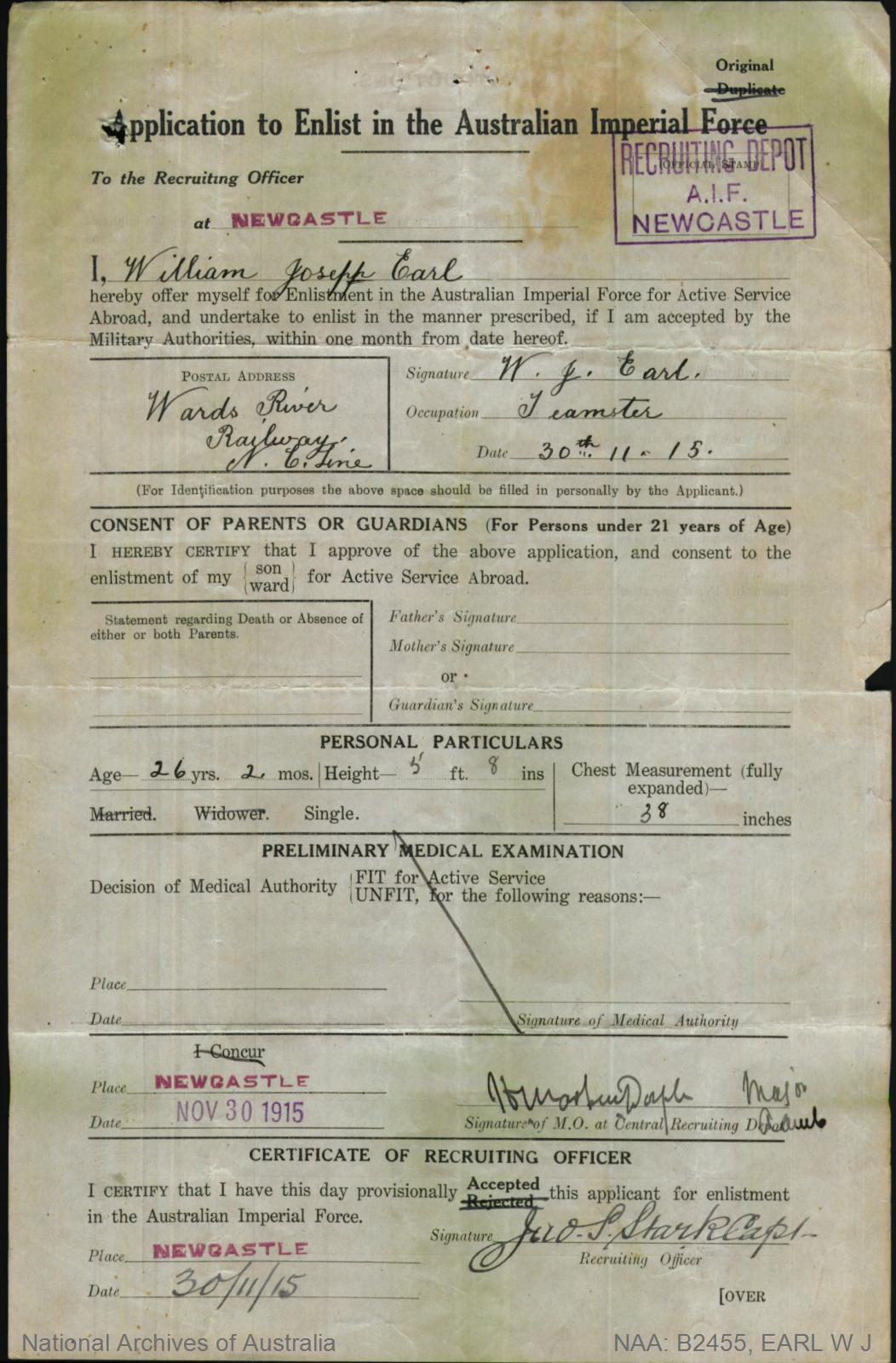
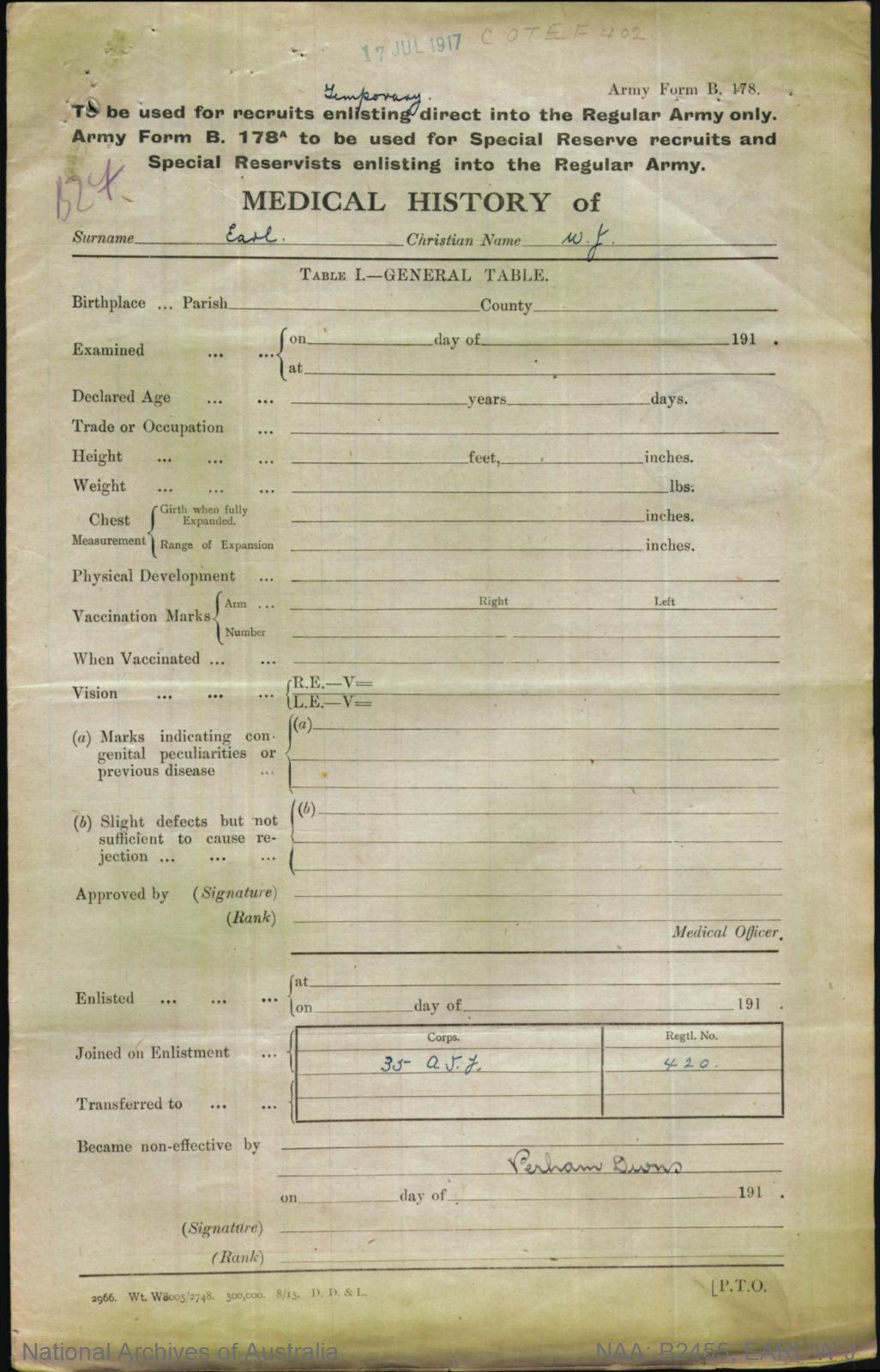

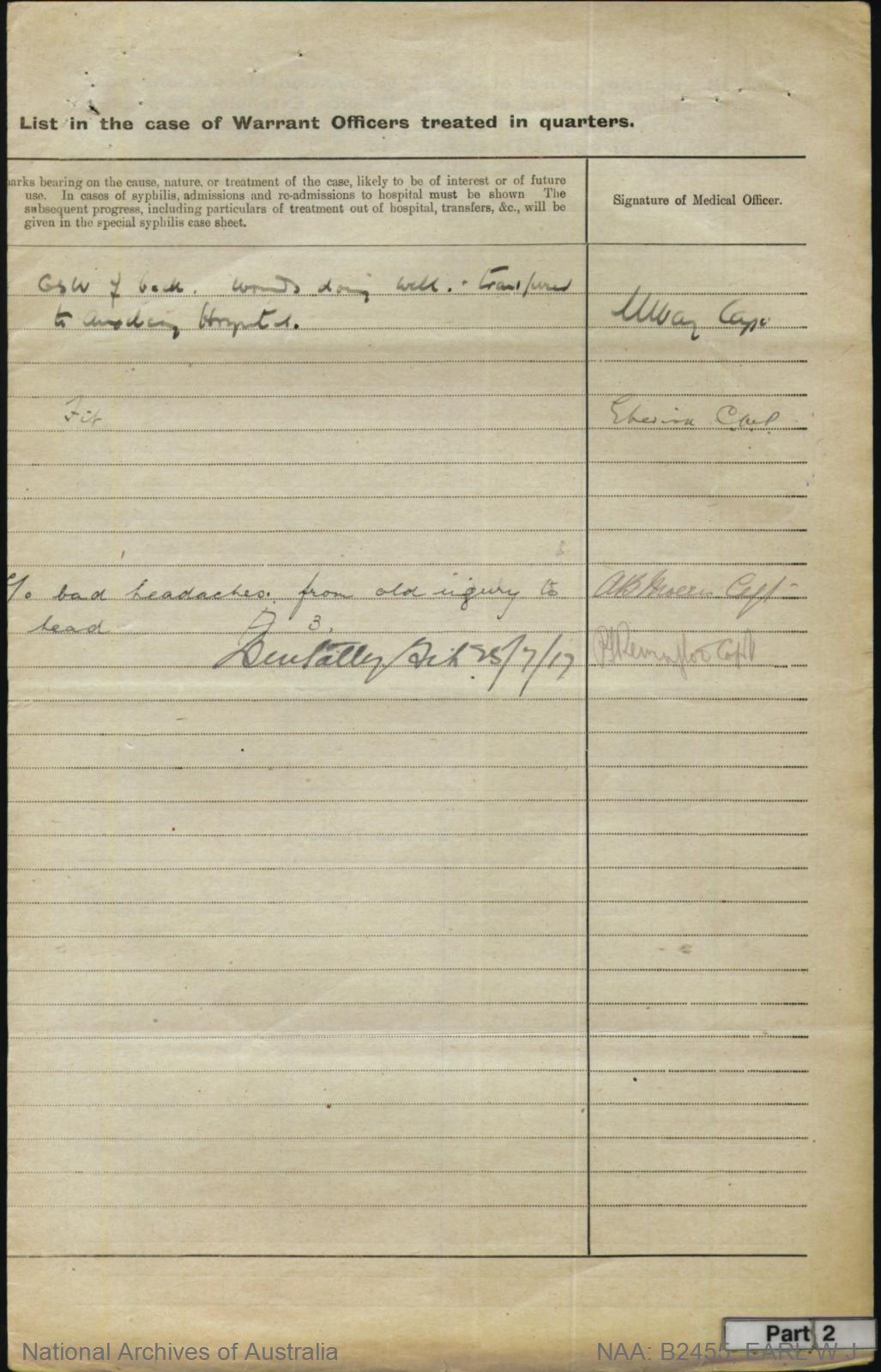
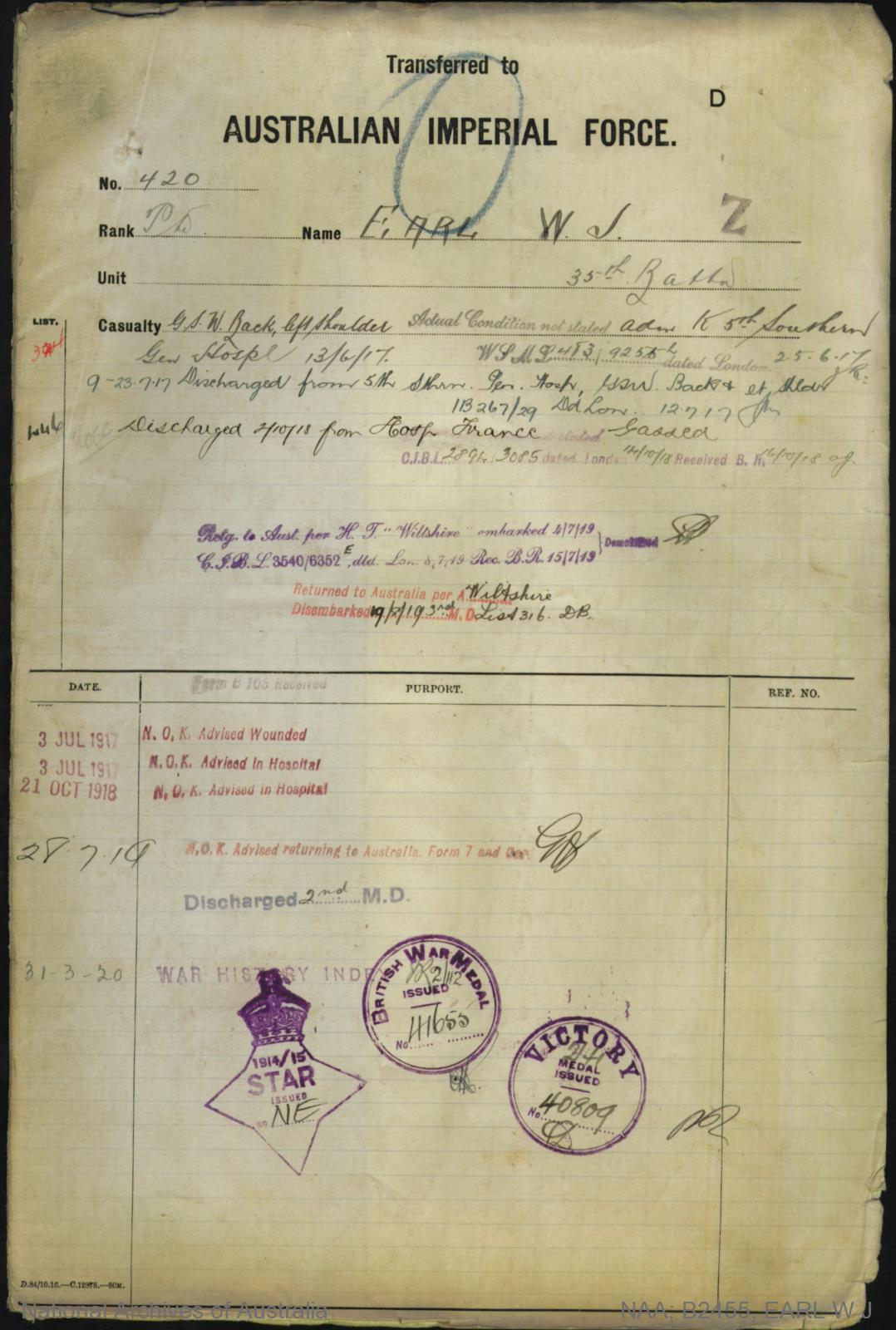
Under Construction: 24/07/2024-05/08/2024.
